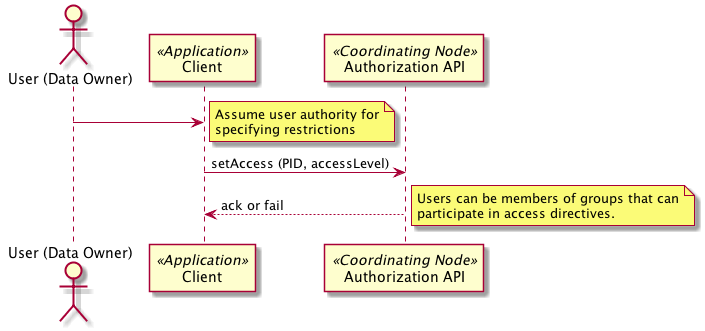DataONE API - 2.0
Use Case 31 - Manage Access Policies¶
- Revisions
- View document revision history.
- Goal
- Manage Access Policies - Client can specify access restrictions for their data and metadata objects. Also supports release time embargoes.
- Summary
It will be necessary to adjust access control policies for any object in the system as its use progresses through the science data lifecycle. Note that it seems likely that in most cases, content will progress to less restrictive permissions as the original researcher publishes or otherwise completes activities that require some aspects of access control on the objects in question.
There are many design aspects to be considered in setting and ensuring timely and complete propagation of changes to access control rules through the system.
- Actors
- Data owners
- Member Nodes
- Investigator Toolkit
- Coordinating nodes
- Preconditions
- Content is present on a system
- Access control editing facilities are available
- Triggers
- A data owner or manager needs to alter access control policies
- Post Conditions
- The access control policies associated with the object are updated throughout the system in a timely manner.

Figure 1. Interactions for use case 31. Client can specify access and replication restrictions for theirndata and metadata objects, and supported timed embargoes
Notes
- Users can be members of groups that can participate in access directives.
- I have removed the phrase “and replication” from the use case statement because Use Case 08 deals with setting replication policies. (PEA)
- Step #1, should have a signature of setAccess(token, PID, accessPolicy). Even though the diagram says “Assume user authority for specifying restrictions”, practically speaking we will need to verify that authority and the user’s identify with a token. Also “accessLevel” sounds very limited, and access policy implies a possibly more sophisticated access policy delineation, including embargoes.
